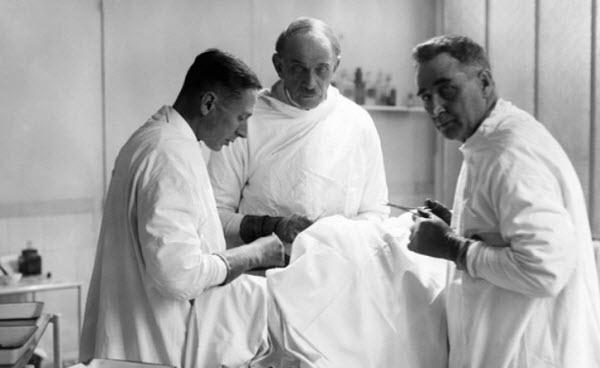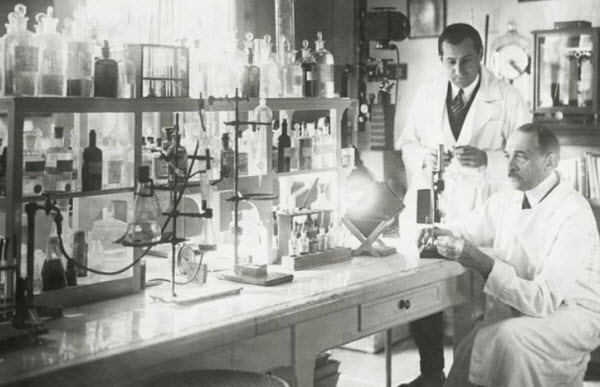The search for eternal youth has long captivated the minds of scientists, both in recent times and throughout history. Enormous sums have been spent on research and studies in an attempt to turn this dream into reality. Some of these efforts have ventured into bizarre territory, including one particularly radical theory from the early 20th century. Sergei Voronoff, known at the time as the “Monkey Gland Expert,” proposed an extraordinary idea: that human aging could be halted or even reversed, and certain diseases treated, through the transplantation of monkey testicles into humans. This theory shocked the scientific community due to its audacious nature.
Born in Russia in 1866, Sergei Voronoff moved to France at the age of 18 and became a French citizen in 1895. While in France, he studied medicine and specialized in surgery under the mentorship of Alexis Carrel, a pioneering surgeon and Nobel laureate renowned for his work on blood vessel suturing. Voronoff became fascinated with the idea of organ transplantation from animals to humans, believing it could rejuvenate and cure diseases by transferring hormones. In 1889, he began working with the experimental physiologist Charles-Édouard Brown-Séquard, who was also interested in the effects of gland rejuvenation. Brown-Séquard had injected himself with a serum containing crushed pig and guinea pig testicles, but his results were disappointing and ridiculed in scientific circles, compared to the mythical Fountain of Youth. This ridicule led Voronoff to believe that tissue transplantation, rather than injections, was the key to achieving the desired results.

In 1896, Voronoff moved to Egypt, focusing on castrated individuals. According to a 2007 research paper on his life and work, he observed that these individuals suffered from obesity, sparse body hair, wide hips, sagging muscles, lethargy, and memory problems, attributing these symptoms to the lack of testicular secretions. After 14 years of research in Egypt, Voronoff returned to France in 1910 to continue his experiments with animals. He began transplanting organs, tissues, and bones between different species. He gained a reputation for his attempts to transplant younger monkey testicular tissue into older animals, leading him to consider primates as ideal donors due to their biological similarities to humans. In 1915, Voronoff transplanted a chimpanzee thyroid gland into a mentally ill French man, claiming that the patient’s mental abilities returned to normal within a year.
Voronoff’s research was heavily focused on the power and impact of reproductive organs, particularly testicles. In his 1920 book, “Life: A Study on Methods of Restoring Vital Energy and Extending Life,” he claimed that sexual glands stimulate brain activity and contribute to muscular energy and emotional vitality. He argued that transferring healthy monkey testicular tissue into aging humans could rejuvenate them, much like an injection of youth. That same year, he began applying his theory, performing a transplant of monkey testicular tissue into a man’s scrotum in July 1920. He claimed that this procedure could rejuvenate youth, treat aging, schizophrenia, extend life, and enhance sexual performance.

By 1923, Voronoff was the director of an experimental laboratory at the Collège de France. His work on testicular transplantation gained popularity and acclaim, leading him to establish private farms in Africa to care for monkeys for gland extraction. He presented his research at an international surgeons’ conference in London, where it astonished attendees. Voronoff even promised that his procedures would soon be available for women as well, claiming he could turn grandmothers into young women. His ambitious claims and the belief in his methods led to at least 300 procedures performed by the mid-1920s, including one case where a woman received tissue from a monkey ovary. Voronoff’s demand for his surgeries grew, prompting him to purchase a castle in Grimaldi, Italy, in 1925, where he built a monkey enclosure and hired a former circus trainer to manage it. The castle was equipped with a small hospital for surgeries.

In a 1927 article published in the “Delaware Star,” Voronoff claimed to have performed his procedure on over 1,000 individuals worldwide, restoring youthful vitality to those in their seventies. He also announced experiments with sheep testicular tissue, suggesting that this could create a new breed of super-sheep. He speculated that similar procedures on humans might also produce “supermen” with the potential for immortality, as long as their glands remained healthy.
To fund his research, Voronoff charged up to 10,000 French francs per surgery, a significant sum equivalent to the annual salary of a Paris Opera member in the 1920s. He continued to pursue other questionable experiments, including transplanting human ovaries into monkeys and attempting to fertilize animals with human sperm. As the benefits of his procedures waned and skepticism grew, Voronoff suggested that the fading effects were due to the gland’s deterioration, which could be corrected with subsequent transplants. By 1930, he theorized the need for better matching of monkey and human blood and proposed an experiment to extend human lifespan to 140 years. However, the scientific community remained unconvinced.

By the 1930s, Voronoff retired from performing these surgeries but continued to discuss their benefits. During his research on human disease treatments in his castle, World War II broke out, forcing him to flee to the United States. He was later called back to France as a surgeon, but upon returning to his castle, he found it destroyed by bombing. Despite his determination to rebuild, he did not live to see it completed, passing away in 1951 as a wealthy but discredited scientist. Although he had not achieved the rejuvenation he promised, Voronoff left behind a legacy of over 2,000 surgeries performed in France, India, and elsewhere. While modern science may view his methods as foolish, they were considered almost magical at the time.
